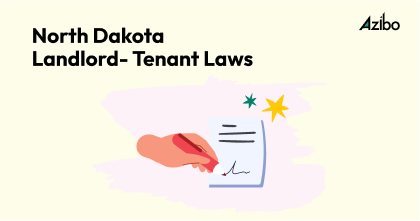Are you a landlord in North Dakota navigating the eviction process? Understanding the steps and regulations is key to handling tenant disputes efficiently.
From serving notices to attending court hearings, each stage requires attention to detail and legal compliance. Knowing reasons for eviction empowers you to take swift action when necessary.
By familiarizing yourself with the process, you can protect your property rights and uphold lease agreements. This guide equips you to navigate North Dakota evictions confidently.
Eviction Process Overview
In the North Dakota eviction process, a landlord serves a three-day North Dakota eviction notice to initiate proceedings. This notice is crucial in adhering to North Dakota eviction laws.
After serving the notice, the landlord must file an eviction lawsuit with the court per North Dakota eviction laws, following the proper procedures outlined by state regulations. Two common types of eviction notices in North Dakota are the Rent Demand Notice and the Lease Violation Notice.
Once the landlord files a Complaint for Eviction in North Dakota District Court, a $80 filing fee is required. Subsequently, the court serves the tenant a summons, leading to a court hearing where both parties present their cases and receive a judgment based on the evidence provided.
Reasons for Eviction
When a tenant repeatedly violates the lease agreement terms, you may have grounds for eviction in North Dakota. Common reasons for eviction include entering the property through force, intimidation, fraud, or stealth. Menacing conduct or threats towards others can also lead to eviction.
If a tenant fails to pay rent three days after it’s due or violates a material term of the lease agreement, eviction may be warranted. Unreasonably disturbing other tenants’ peaceful enjoyment of the premises is another valid reason for eviction.
Understanding these reasons can help you navigate the eviction process effectively and protect your rights as a landlord in North Dakota.
North Dakota Eviction Notice and Lawsuit Filing
Serve a three-day North Dakota eviction notice to the tenant before filing an eviction lawsuit with the court. In North Dakota, two types of eviction notices can be issued: a Rent Demand Notice or a Lease Violation Notice.
After serving the appropriate notice, file a Complaint for Eviction in North Dakota District Court. The complaint form must include essential details and be accompanied by an $80 filing fee.
Once the court serves the tenant a summons, both parties will attend a court hearing where the landlord presents the lease agreement, eviction notice, and evidence. Following the hearing, the judge will issue a judgment for the landlord’s immediate restitution of the premises, allowing for the next steps in the eviction process to proceed swiftly.
Court Proceedings and Judgments
Continue the eviction process by attending a court hearing where you, as the landlord, will present the necessary documentation and evidence for judgment. Make sure to bring essential documents such as the lease agreement, eviction notice, complaint, and any other relevant evidence to support your case.
During the hearing, explain your reasons for eviction clearly and concisely. The judge will review the presented information and may issue a judgment in your favor for the tenant’s immediate restitution of the premises.
Be prepared for different outcomes, and follow any further instructions provided by the court after the judgment is made. This step is crucial in finalizing the eviction process and ensuring a smooth transition for the property’s possession.
Additional Eviction Details
Upon receiving the judgment for immediate restitution of the premises, you must ensure that the Writ of Restitution is promptly served, obligating the tenant to vacate the property as per the court’s decision. This legal document gives the tenant a specific timeframe to move out voluntarily.
If the tenant fails to comply, the next step involves the Sheriff returning to forcibly remove the tenant from the premises. In cases involving squatters, the eviction process may differ, and it’s essential to understand the specific steps required.
Costs associated with eviction in North Dakota can vary, so it’s advisable to be prepared financially. If you suspect squatters on your property, it’s crucial to take immediate action to protect your rights as a landlord.
Conclusion
Now that you have a clear understanding of the North Dakota eviction process, you can confidently navigate tenant disputes and uphold your property rights.
By following the steps outlined in this guide, you can effectively address issues such as non-payment of rent or lease violations.
Remember to always adhere to the law and communicate openly with tenants to resolve conflicts in a timely and compliant manner.
Good luck with your future eviction proceedings!

